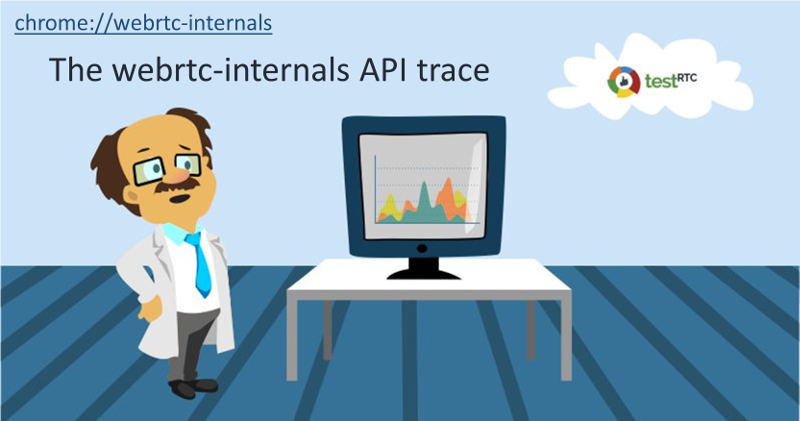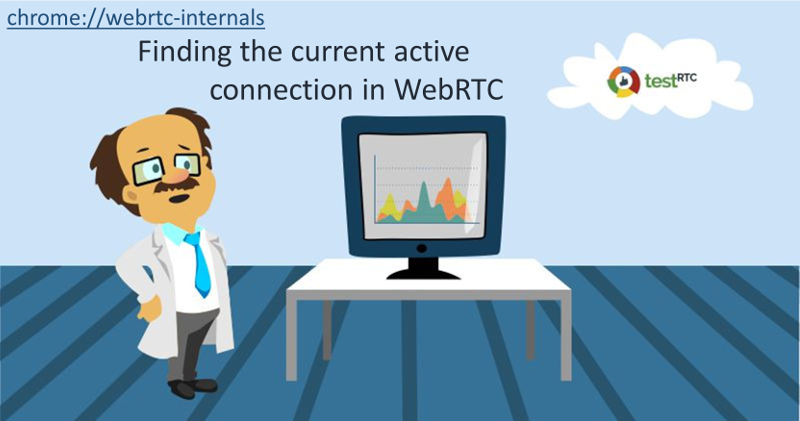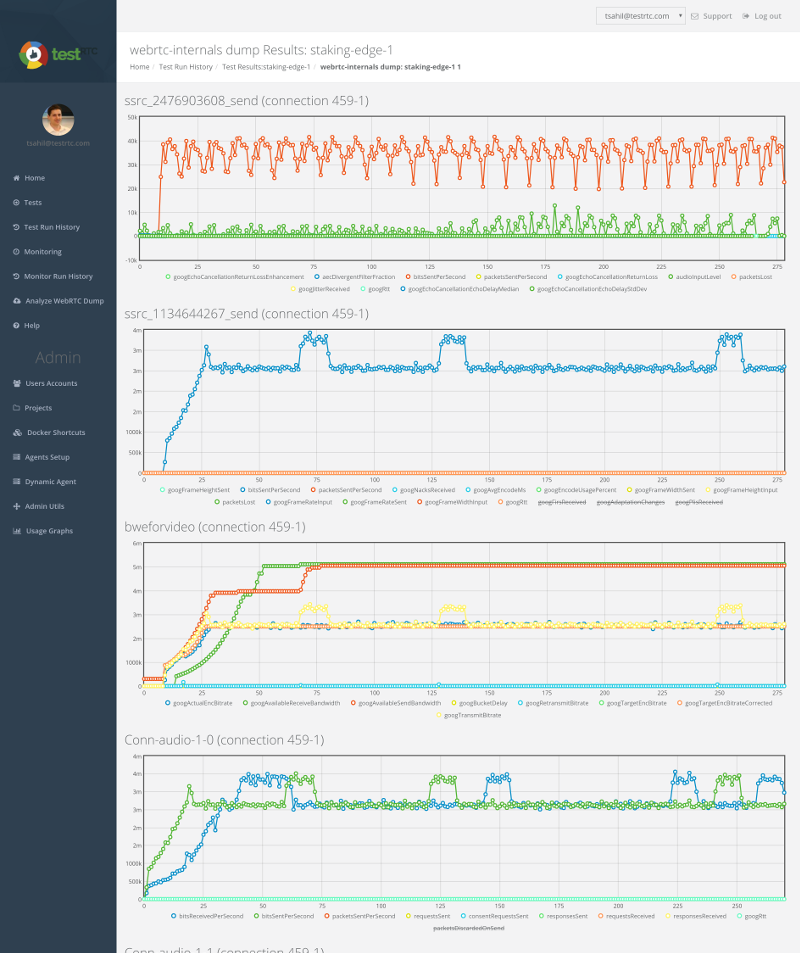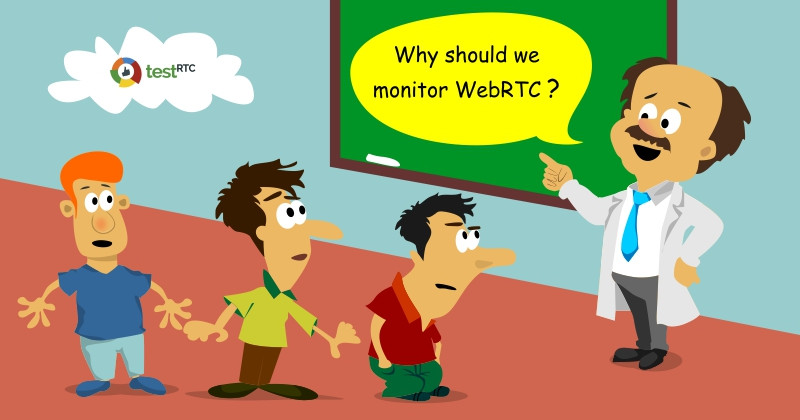It is 2017 and it seems that browser vendors are starting to think of all of us WebRTC developers and testers. Well… not all the browser vendors… and not all the time – but I’ll take what I am given. I remember years ago when I managed the development of a VoIP stack, we decided […]
Testing WebRTC is hard enough when you need to automate a single test scenario with two people in it, so doing things at scale means lots more headache. We’ve noticed that in the past several months where more developers have started using our service to understand the capacity they can load on a single server. […]
There’s a wealth of information tucked into the chrome://webrtc-internals tab, but there was up until recently very little documentation about it. So we set out to solve that, and with the assistance of Philipp Hancke wrote a series of articles on what you can find in webrtc-internals and how to make use of it. The […]
This time, we take you through the webrtc-internals API trace to see what can you learn from it. To make this article as accurate as possible, I decided to go to my source of truth for the low level stuff related to WebRTC – Philipp Hancke, also known as fippo or hcornflower. This in a […]
Today, we want to help you find the current active connection in webrtc-internals. To make this article as accurate as possible, I decided to go to my source of truth for the low level stuff related to WebRTC – Philipp Hancke, also known as fippo or hcornflower. This in a way, is a joint article […]
To make this one as accurate as possible, I decided to go to my source of truth for the low level stuff related to WebRTC – Philipp Hancke, also known as fippo or hcornflower. This in a way, is a joint article we’ve put together. webrtc-internals is a great tool when you need to find […]
I am not sure about you, but I get bored easily when people tell me a bug costs more in production than it does earlier on in the development lifecycle. It sounds correct, but usually it comes with product managers and sales people throwing out $$$ amounts trying to make a point of it. Being in […]
Education and E-learning are one of the largest market niches that are adopting WebRTC. It probably has to do with the no-fuss approach that WebRTC has, coupled with the ability to hook it up to different business processes. This enables education and LMS vendors to integrate WebRTC into their products directly, reducing the need to ask customers […]
It has been a while since we released a version, so it is with great pleasure that I am writing this announcement. Yes. Our latest release is now out in the wild. We’ve upgraded our service on Sunday, so it is about time we take you for a quick roundup of the changes we’ve made. […]
That’s actually a great question. We get this every once in awhile, so I wanted to touch it here. Our WebRTC monitor? It is like pingdom, just more complex and end-to-end – we make sure that if a user tries to access your system he will end up getting media and not just a web […]









